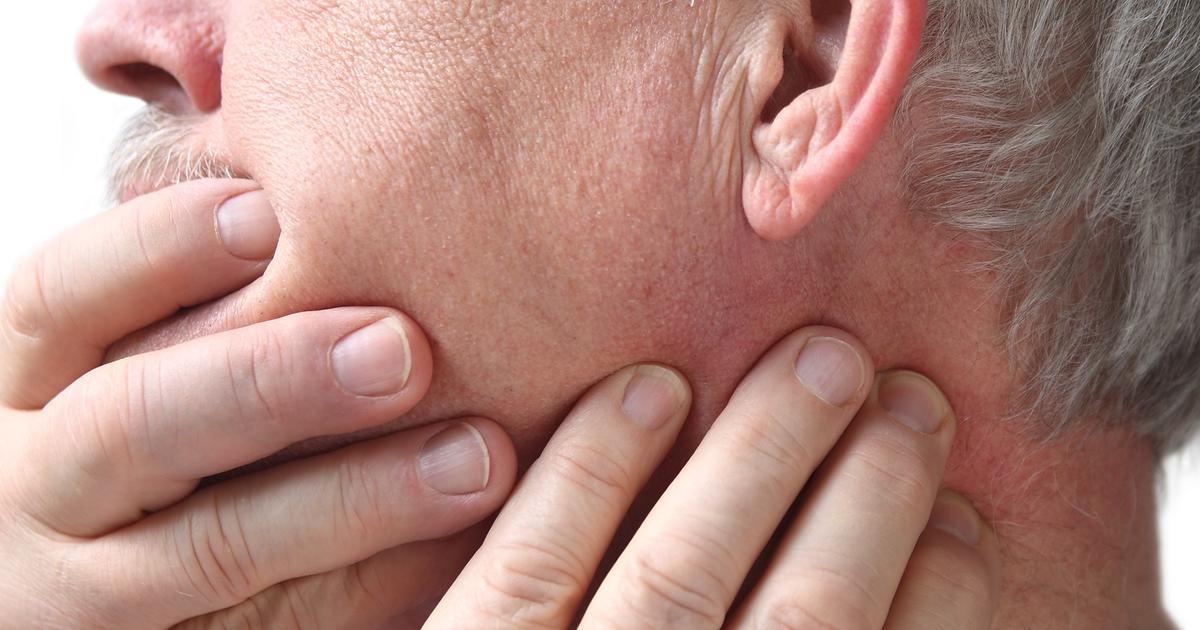Serious Symptoms Of Parkinson's Disease
Parkinson's disease a common neurological movement disorder that causes an individual to experience multiple neurological and motor symptoms due to a deficiency in dopamine. Dopamine, an important chemical in the brain, is considered a neurotransmitter and helps the nerves communicate with each other. This deficiency can be the result of genetic factors, exposure to certain chemicals in the environment, or idiopathic. Parkinson's disease develops more often in men than it does in women, and adults past their sixth decade of life are more likely to be affected. Parkinson's is diagnosed with a physical examination, a thorough neurologic examination, MRI scans, fMRI scans, PET scans, DaTscan, and trial medication. Parkinson's disease does not currently have a cure, but treatment can help alleviate symptoms. Parkinson's treatment may involve the use of medication, deep brain stimulation, speech therapy, occupational therapy, and physical therapy.
Learn about the major symptoms of Parkinson's disease now.
Tremors

A tremor is an uncontrollable and unintentional movement in a rhythmic motion of one limb or one part of an individual's body. Muscle twitches and muscle spasms are not the same symptoms as a tremor. An involuntary contraction of a muscle is a muscle spasm, and the uncontrolled movement of a small region of a muscle is referred to as a muscle twitch. Two different types of tremors may occur. Resting tremor occurs when an individual is at rest, and an action tremor occurs during targeted movements. The most common category of tremors to occur in Parkinson's disease patients is referred to as a parkinsonian tremor. Parkinsonian tremor is one caused by damage to the section of the individual's brain responsible for the control of movements. Parkinsonian tremor is considered to be a resting tremor and typically initiates on one side or in one limb of a patient's body. Eventually, the tremor moves to the other limbs or side of the body as Parkinson's disease progresses.
Uncover the next symptom of Parkinson's disease now.
Muscle Stiffness

Muscle stiffness and rigidity are terms used to describe when an individual has difficulty moving their muscles after rest and has a tight feeling in their muscles. Muscle stiffness is commonly accompanied by muscle cramping, muscle pains, and muscle discomfort. In Parkinson's disease patients, muscle stiffness can be unilateral or bilateral. Muscle stiffness can also result in a moderately reduced range of motion. A common characteristic seen in individuals affected by Parkinson's disease is a decreased arm swing when walking caused by muscle stiffness. Facial masking is also a common occurrence in affected individuals, where the stiffness of the facial muscles produces a mask-like appearance. A patient with this symptom may also find it challenging to pivot or turn when they are getting out of a sitting position or walking. Muscle stiffness is one of the three main signs a physician will look for in a patient to make a diagnosis of Parkinson's disease. Between ninety and ninety-nine percent of all Parkinson's disease patients experience muscle stiffness.
Continue reading to learn about more symptoms of Parkinson's disease now.
Balance Issues

A balance issue is a term used to refer to any problem that causes an individual to feel unsteady, dizzy, lightheaded, or like the room they are in is spinning. Balance problems can occur when individuals are sitting down, standing, or lying down. An individual's balance is maintained through the careful coordination of numerous systems in the body working together. The nerves, inner ear balance organs, bones, joints, muscles, blood vessels, bones, heart, and vision must all be working well and in sync to produce adequate balance in an individual. The organ in the inner ear and all of its components make up an individual's vestibular system, which is responsible for keeping them balanced. However, the nerves that send signals from the inner ear to the brain and vice versa may become affected by the degeneration process that occurs as a result of Parkinson's disease, which is what causes patients to have balance issues.
Discover additional Parkinson's disease symptoms now.
Changes In Speech

Individuals affected by Parkinson's disease tend to speak in a single tone without much emotion. Patients may speak very quietly, trail off at the end of a sentence, slur their words, or mumble. An individual who has Parkinson's disease may have speech with a hoarse or breathy sound to it, and they may stammer or stutter when they speak. The motor symptoms associated with Parkinson's disease can cause an individual to send inappropriate non-verbal cues or cause difficulty with their expression of emotions. The symptoms not involved with motor skills in Parkinson's disease patients, such as cognitive problems, can cause changes to their speech. An individual affected by Parkinson's disease may find it challenging to find and form the right words to express what they want to say.
Learn more about the warning signs of Parkinson's disease now.
Movements Slow Down

The slowness of movement, bradykinesia, is one of the three hallmark symptoms a physician looks for when making a diagnosis of Parkinson's disease. An individual who has Parkinson's disease may experience a decrease in the speed of their automatic movements, such as swinging of the arms when walking and blinking their eyes. Another issue that occurs in patients as a result of bradykinesia is problems with the initiation of movement, like when the individual is attempting to get up from a seated position. The slowness of movement may also manifest as an abnormal stillness in the patient's face or a reduction in their facial expressions. Everyday functions are often impacted by bradykinesia, such as brushing the teeth, cutting up food, pouring a glass of milk, or buttoning a shirt. The slowness of movement tends to occur unpredictably. One minute an affected individual can move with ease, and the next minute they may require help performing basic everyday tasks.
Uncover additional symptoms of Parkinson's disease now.
Impaired Posture

One of the most common hallmark symptoms of Parkinson's disease is impaired posture. An individual with Parkinson's disease will often have an increasingly stooped posture that causes their shoulders to hunch forward, rather than being aligned with their hips and feet. The cause of the posture is an increase in muscle stiffness or rigidity. Parkinsonian posture tends to include rounded shoulders, a head positioned forward, increased trunk flexion, and bent knees. Posture can affect a patient's ability to speak loudly and clearly, ability to move their upper extremities and neck, perception of where their body is in the space around them, balance, postural muscle strength, and ability to swallow. Some individuals also experience headaches and pain in their jaw joints. Certain stretching and strengthening exercises can be used to help correct posture. A physical therapist may be able to recommend a routine that's best for each patient.
Continue reading for more information on the warning signs of Parkinson's disease now.
Issues Writing

Parkinson's disease can sometimes lead to issues writing, particularly with handwriting. Patients who experience a condition called freezing of gait might also have the same problems with writing. This is a motor issue that exists outside the typical gait freezing episodes. Handwriting is considered a sequential movement, which requires a specific type of motor function. This means patients who experience freezing of gait might be more likely to have handwriting impairment than patients who don't. Patients with Parkinson's disease might find that they have a decreased ability to print or to write in cursive. In one study, Parkinson's patients who have freezing of gait struggled with all forms of handwriting, but they had the most trouble when they were supposed to alternate handwriting sizes rather than shaping the letters at one continuous size. The same study showed Parkinson's disease patients without freezing of gait did experience some handwriting difficulty, but not to the same extent as those who had freezing of gait. Individuals might experience something called micrographia, which causes handwriting to be abnormally small and cramped due to a neurodegenerative disorder.
Discover additional symptoms of Parkinson's disease now.
Loss Of Ability To Smell

Losing the ability to smell is not always an indicator of Parkinson's disease, and it could be indicative of several things. With that said, the majority of individuals with Parkinson's disease have lost some sense of smell. Hyposmia, the medical term for a reduced sense of smell, can often be pinpointed as an early sign of Parkinson's disease. Some patients can pinpoint their loss of smell as having started several years before their Parkinson's disease diagnosis. Because the loss of the sense of smell is so gradual, and because we don't often pay much active attention to what we're smelling, many individuals don't notice it right away. Patients are unlikely to report it, and doctors don't often ask about it. One way to check for hyposmia is by smelling licorice, pickles, bananas, or other foods with strong odors. If individuals have trouble identifying the scents, they should talk to a doctor.
Get more details on Parkinson's disease symptoms now.
Issues with Sleep

Issues with sleep can sometimes be an early sign of Parkinson's disease. With that said, many other conditions can lead to sleep problems. Some individuals find they experience sleep issues before they note any motor control issues. Because doctors tend not to consider Parkinson's disease until motor symptoms begin, this might not always aid in early diagnosis. Several different sleep issues often occur in Parkinson's disease patients. Some experience insomnia, nightmares, and excessive sleepiness during the day. 'Sleep attacks' are also possible, which are episodes in which someone involuntarily falls asleep. REM sleep behavioral disorders might occur, and these can cause patients to act out their dreams because their bodies aren't paralyzed during sleep. Restless legs syndrome and periodic leg movement disorder are also common, as is sleep apnea, a condition that causes individuals to stop breathing intermittently during the night. Some patients report nocturia, which is a frequent need to get up and urinate during the night. Studies have also found associations between Parkinson's disease and narcolepsy.
Learn more about the major symptoms of Parkinson's disease now.
Constipation

The majority of cases of constipation are related to dehydration or to not having enough dietary fiber, but it can also sometimes be a sign of Parkinson's disease, particularly when it is ongoing. Constipation occurs when there's an increased amount of time between bowel movements, and when stool becomes more difficult to pass, even though individuals haven't made any significant changes to their diet or the amount of liquid they drink. Some Parkinson's disease patients experience constipation because the autonomic nervous system functions improperly. This part of the nervous system helps regulate the activity of the smooth muscles in the intestinal tract. If the intestinal muscles aren't working as effectively as they should be, it can lead to constipation. There are also some medications to treat Parkinson's disease that can cause constipation. In these cases, the constipation is a side effect of the treatment rather than an underlying symptom of illness.